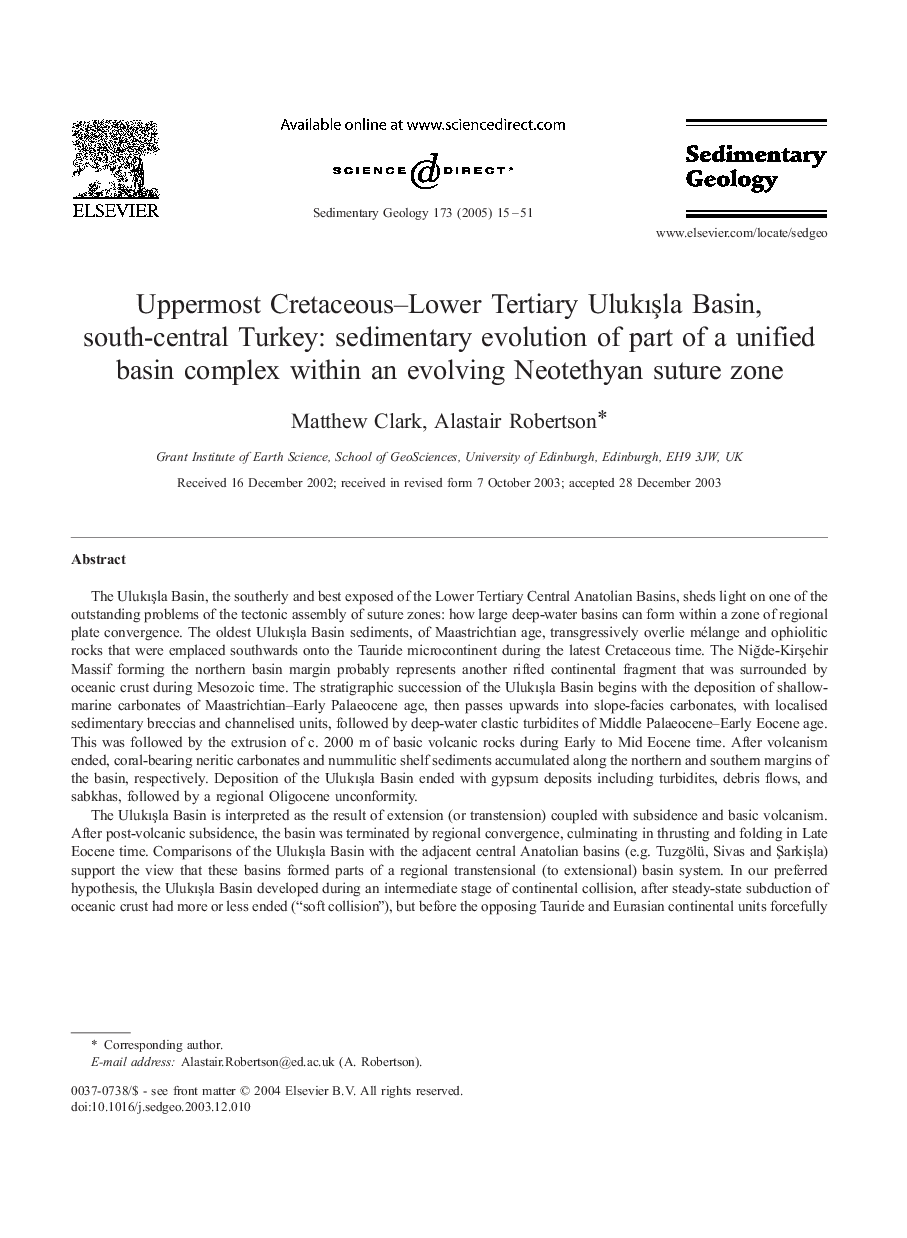| Article ID | Journal | Published Year | Pages | File Type |
|---|---|---|---|---|
| 9526121 | Sedimentary Geology | 2005 | 37 Pages |
Abstract
The UlukıÅla Basin is interpreted as the result of extension (or transtension) coupled with subsidence and basic volcanism. After post-volcanic subsidence, the basin was terminated by regional convergence, culminating in thrusting and folding in Late Eocene time. Comparisons of the UlukıÅla Basin with the adjacent central Anatolian basins (e.g. Tuzgölü, Sivas and ÅarkiÅla) support the view that these basins formed parts of a regional transtensional (to extensional) basin system. In our preferred hypothesis, the UlukıÅla Basin developed during an intermediate stage of continental collision, after steady-state subduction of oceanic crust had more or less ended (“soft collision”), but before the opposing Tauride and Eurasian continental units forcefully collided (“hard collision”). Late Eocene forceful collision terminated the basinal evolution and initiated uplift of the Taurus Mountains.
Keywords
Related Topics
Physical Sciences and Engineering
Earth and Planetary Sciences
Earth-Surface Processes
Authors
Matthew Clark, Alastair Robertson,
